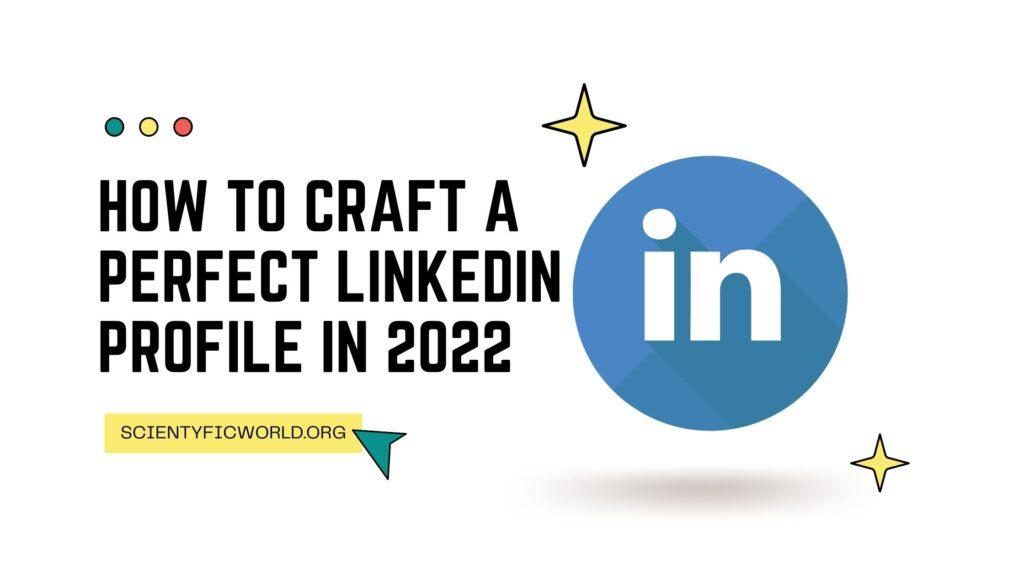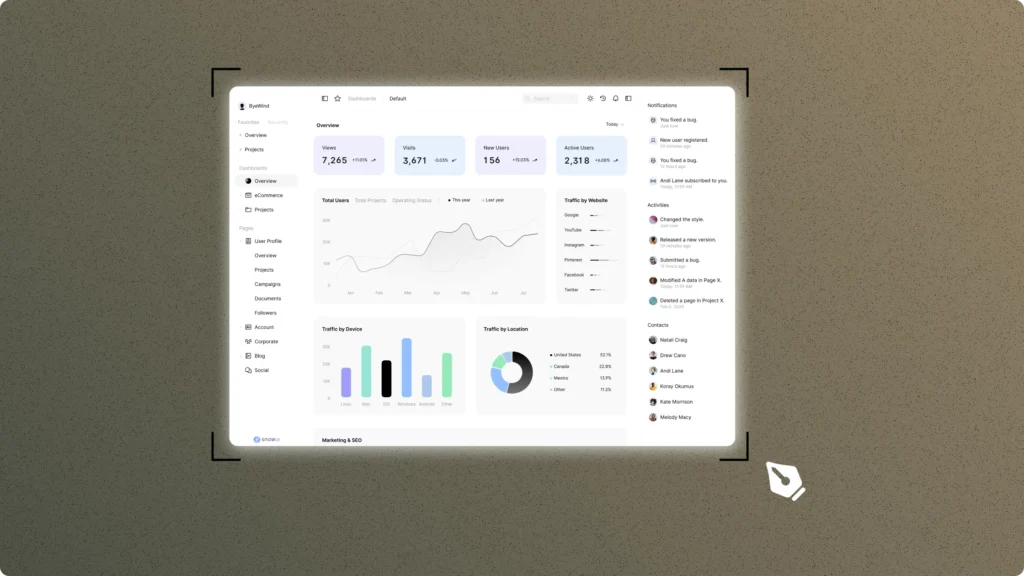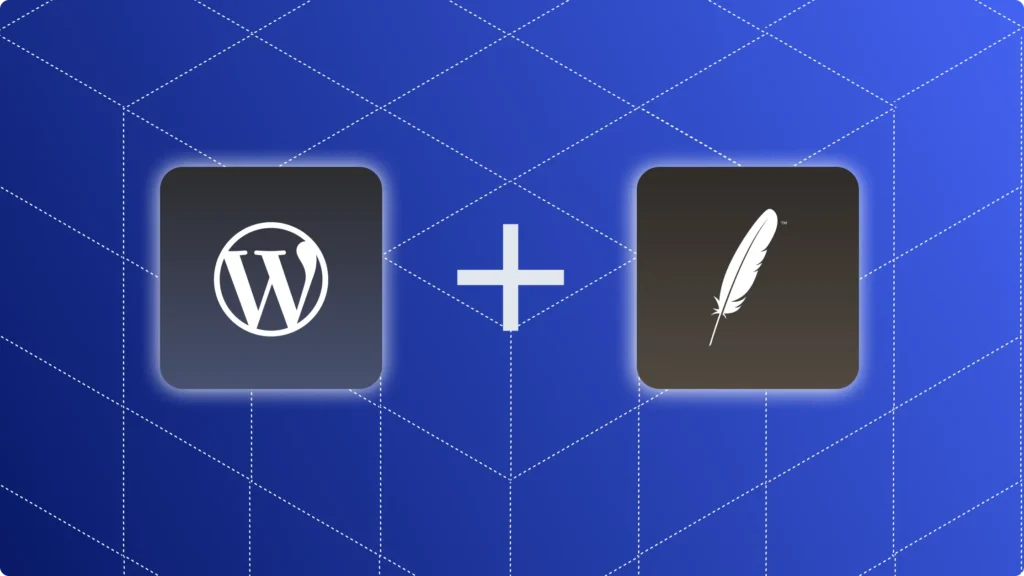When you’re crafting your Linkedin profile, don’t just focus on the basics. LinkedIn has evolved into an all-encompassing social network with over 900 million users in 2022 and increasing every day. So, it becomes even more important in your job search and career development. To stay relevant on Linkedin, you’ll need to pay special attention to how you present yourself online so that employers and recruiters will find you valuable and worth pursuing further when they browse your Linkedin profile in 2022.
An Introduction
Just as resumes are getting longer and more robust, so too is LinkedIn. While you may have already built your profile, there’s probably room for improvement.
The great thing about LinkedIn is that your profile can change over time; you don’t need to create it once and then never touch it again. You can and should edit and update your LinkedIn profile on an ongoing basis as you learn new things, achieve new goals, or find new opportunities that help highlight how much you deserve a promotion or a raise.
Since your LinkedIn profile evolves, a good framework for crafting one is imagining yourself five years from now:
- What will you look like?
- What will you have done?
- Who will know about all of these accomplishments?
A perfect LinkedIn profile in 2022 has all of those details included. Here’s how to get started.

LinkedIn Pages

Now that Twitter has tightened up its character limit and Snapchat stories are no longer ephemeral, it’s natural for some attention to shift back toward LinkedIn.
But people aren’t returning simply because they like being reminded of their high school classmates, or because recruiters enjoy sifting through long-winded lists of industry jargon. Instead, they want updates on who you are professionally—and they expect your profile page to reflect that.
As sites like Facebook and Instagram increasingly focus on visual content, LinkedIn is becoming a place where less is more; when users make first contact with someone new (for example by requesting an introduction), they’re not looking for ways to connect; instead, they’re just trying to learn about each other’s professional lives.
Your job description should be short but descriptive: It should let readers know what company you work at, how many years you’ve been there, and if applicable why you’re leaving. Meanwhile what was once reserved for mentors might now also appear under Experience: Whether it’s managing a team or writing code often depends on how far along your career path is and how comfortable people feel connecting with someone new.
Creating Your Linkedin Elevator Pitch
To make your title as effective as possible, keep it short (under 50 characters), use action words, and use numbers. Hiring managers scan through dozens of profiles every day and they don’t have time to read verbose resumes.

They’re looking for keywords, so if you want them to read your profile, be sure they are there. If you were trying to get someone’s attention, how would you say it? Most job titles sound generic and forgettable: receptionist, administrative assistant, customer service representative, and analyst (the list goes on). Instead of using these interchangeable terms in your title field, think about what specific tasks you will be performing in your role.
For example, a Customer Service Specialist is much more compelling than an Administrative Assistant. It tells an employer that you care about their business rather than just sitting behind a desk all day (even though admin is important too!). Similarly, depending on what industry you’re applying to or for which department you’re applying to at said company, also avoid generic terms like analyst. You may have better luck getting noticed by titling yourself a Finance Analyst instead of an Analyst. Always include your name and location within 80 characters; nobody wants to hire someone who doesn’t live where they work! What makes you different from everyone else? Instead of focusing on how awesome you are, emphasize what sets you apart from other candidates.
Employers are not only looking for professionals with high education, skill levels and experience but also team players who can fit into corporate culture seamlessly. As a result, LinkedIn includes a section entitled skills & interests. Make sure to fill out both areas as completely as possible—don’t leave any gaps! Reflecting on your cover letter/resume, mention any professional or outside activities that demonstrate these skills. Don’t try to impress employers with big-ticket items like creating a two-million-dollar project but instead show off how much initiative you take in class or internships.
Are you currently pursuing higher education? Are you a fast learner or did you complete something noteworthy quickly? Mention either one here because it shows potential employers that although you may lack certain educational qualifications now, none of those things will stop you from achieving your goals.
What do others say about you? Your testimonials should reflect some comments made by previous bosses, professors, and coworkers. Although speaking directly to recruiters over phone calls may seem scary, keep in mind they probably see hundreds of applicants each week and simply do not have time to engage with everybody individually so use theirs as an opportunity to convey why they should choose YOU over every other applicant.
What do you want people to see?
The first thing you need to do is determine what you want people (your network, your connections, and potential future employers) to see when they look at your profile. For example, perhaps you’re not looking for a job now, but want people who are potential career partners or mentors in the future. If that’s true, choose Other. Or perhaps you want some visibility with investors.
This will give them something easy to scan without being inundated with information about every skill set you possess. No matter what you decide, focus on keeping it simple—don’t try to cram too much into one field. Remember: Potential employers don’t have all day.
They want to know: Who are you? What can you do? Where can we find out more about you? Why should we care?
Focus on answering those questions—and you won’t go wrong. (If you’re still confused, here’s an example of how I answered these questions.) It helps to write down responses before you start typing! You never know when inspiration might strike—but if you wait until after work or after dinner, many of those ideas may be long gone by morning.
Work History Section
In 2022, employers will scan your work history section and they will do it quickly. They’ll look for something that tells them that you’re: (1) professional, (2) have an upward career trajectory, and (3) have stayed with companies longer than two years. This means no job-hopping. And if you absolutely must change jobs—for instance, because of a layoff or promotion—it needs to be obvious why there was an upward trend in your title and why you were promoted or moved on. Employers also want to see leadership experience, especially when it comes to leveraging technology in your company’s industry. Finally, employers are looking for experience working with up-and-coming entrepreneurs so being involved in some sort of entrepreneurship club at your university is valuable!
Education Section
Build your education section by going back and updating your grades for every semester of college. If you dropped out, you can delete that section altogether or have it say completed degree and leave blank. Some people also like to include any relevant certificates, certificates of recognition or awards they received as part of their professional education. Since these items may go on forever, just include anything that is specifically relevant to you and your career path.
For example, if you want to be a program manager at an ad agency then including awards you won in graphic design competitions can help demonstrate your portfolio quality and show off how much attention you pay to detail. On the other hand, if you’re an engineer who hasn’t pursued many creative pursuits, don’t put your pencil drawings up unless they are particularly exceptional!
The Summary Section
After reading, you can see that all professional organizations have space for you to include a summary of yourself. This is your opportunity to introduce yourself and your work interestingly. This will be immediately visible on your profile, so make it snappy and engaging! Be sure not to use any unnecessary jargon or acronyms.
You want it concise and professional. Remember, when someone views your profile, they’re looking at how you present yourself professionally before even getting into what you do. Make sure they know who you are without having to click anything else! When I was younger (and much more insecure) I spent HOURS agonizing over my summary sections – but just 30 minutes is plenty of time to put together something good here. And trust me, you should spend more time on other areas than you do on Summary.
If yours is truly great, people will read it and love it … even if there’s one small typo 😉 And if they don’t like it … well then maybe you need to rethink some things 😉 The Experience Section: Do NOT list every job ever held. Do not list them by company name either; rather group them by category (meaning marketing experience goes under Marketing, sales experience goes under Sales, etc.) Most importantly though – DO take advantage of each field’s capabilities; these fields are meant for specific skill sets.
The Final Touches
I know what you’re thinking, There are still some key components that you haven’t covered.
How am I supposed to create my profile picture?
What about my summary?
What if I have work experience that doesn’t directly relate to my professional field?
How do I set up my career section so it doesn’t look cluttered? Etc., etc. There are dozens of questions like these—all with equally valid answers. Unfortunately, I don’t have space in this book for anything other than general tips and recommendations when it comes to these sorts of things (or at least not yet). However, your best bet is simply searching for information on any topic that concerns you. On LinkedIn alone, there are millions of articles and videos from top professionals who will take you step-by-step through every aspect of creating an outstanding profile. Additionally, just typing related words into a search engine should quickly point you in the right direction as well.
For example: how to create an exceptional infographic resume; how to change settings on LinkedIn; how to find people for networking through LinkedIn; how to add keywords throughout your entire LinkedIn profile; etc., etc… It may take a little time and effort initially but once again we can leave that all behind by using our network! After all most people love talking about themselves which means help finding related content or even creating something helpful could come quickly!
Other Things that Increase LinkedIn Engagement
Boosting Posts – If you want to boost your post on LinkedIn, it is going to cost you. You can spend anywhere from $5.00 up to $1,000 or more for an engagement boost. The great thing about boosting a post is that as long as people are actually viewing your post, you can keep spending money until you feel like your message has been seen by enough people.
Making Friends and Following Companies – In addition to making sure your profile information is accurate and complete, one of the best ways you can connect with others on LinkedIn is by adding them as a friend and following their companies. Make sure you take advantage of these tools every time someone follows you back! Other Social Media Platforms – Another way to connect with others online besides LinkedIn is through other social media platforms such as Facebook and Twitter.
Resources:
You can read these articles and watch the videos for more information.
99 LinkedIn Profile Tips: from Summary & Headline to Images (zety.com)
21+ Essential LinkedIn Profile Tips For Job-Seekers [For 2022] (novoresume.com)







